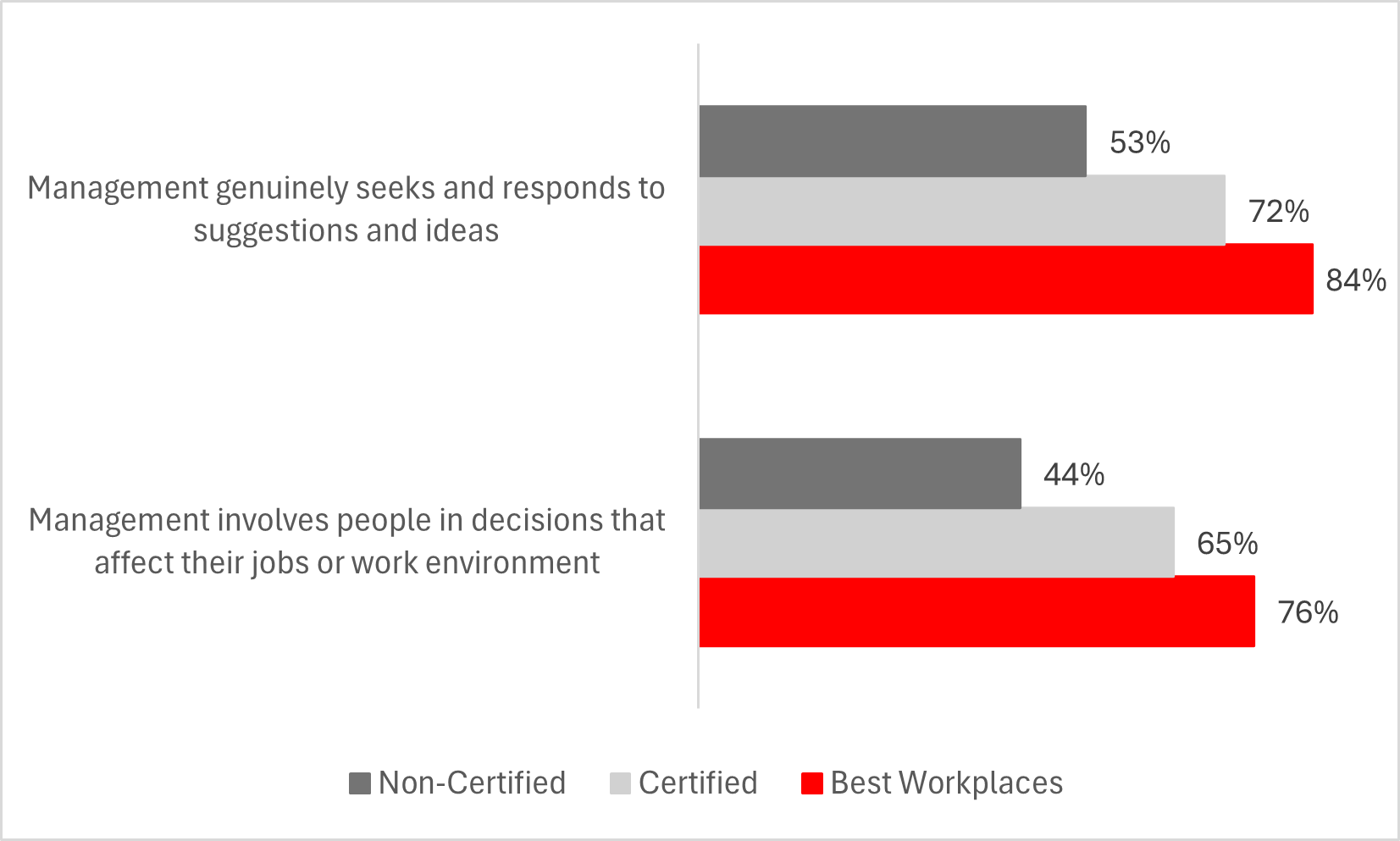How organisations are structured has changed significantly in recent years. Where well- organised, hierarchical work environments used to be the norm, we now see more and more companies opting for flat, agile structures. Leadership is shared, and everyone within the organisation is given space to actively contribute ideas and share thoughts. Employees are no longer expected only to perform their work; being involved and influencing the company’s direction also became part of today's job responsibilities. This is where employee voice comes into play: a powerful way to amplify the voice of employees, stimulate innovation, and further develop the organisation.
What do we mean by the term 'Employee Voice'?
Employee voice is about more than just generating feedback. It includes actively bringing forward ideas, suggesting improvements, and expressing concerns within an organisation. It is an important part of a work culture in which employees can actively participate. Employees are invited to think along with decisions and changes that affect the organisation. It is a way to increase employee engagement and stimulate innovation.
When employees feel heard, it contributes to a culture of trust. The result? A better work experience as well as an organisation that becomes more agile and successful. It shows employees that their opinions matter and enables the organisation to respond more quickly to changing circumstances.
The importance of the ‘Employee Voice’
There are various reasons why the employee voice is important for an organisation’s success. It offers numerous benefits, both for the employees and the organisation as a whole:
- Better decision-making: Employees are closer to the work floor and therefore have valuable insights that can help make processes more efficient and improve performance. Involving employees in decision-making ensures that these insights are optimally utilised..
- Increased engagement: When employees notice that their opinions are taken to heart, it strengthens their connection to the organisation. They feel that they make a difference, which increases their motivation and overall engagement.
- More innovation: Creating a culture of openness and listening to employees regularly leads to surprising innovations. Employees often have fresh ideas, especially if they frequently interact with customers or work with processes that can be optimised..
- Faster problem solving: Issues or bottlenecks do not linger when you actively encourage employees to address them. This allows for quick intervention, enabling the organisation to respond more swiftly and adapt better.
- Better work culture: Organisations where employees feel heard generally experience a more positive work culture. Employees are more satisfied, the employee experience is positively evaluated, and the staff turnover decreases.

Insights from our Great Place to Work survey
The Great Place to Work survey gauges, among other things, the extent to which employees feel that their opinions matter. The following statements from the employee survey provide more insight into the employee experience. The results show clear differences between the Best Workplaces of 2024, certified, and non-certified organisations.
The Best Workplaces data includes all organisations that qualified for the top 10 in 2024 within the categories Small, Medium, Large, and Extra Large. Certified organisations are companies that scored 65% or higher on our employee survey and thus earned the certificate. Non-certified organisations did not meet this threshold.

In the Best Workplaces, employees feel significantly more heard. They feel actively involved in decision-making (76%) and feel that their ideas and suggestions are valued (84%). In contrast, employees in non-certified companies feel less involved (44%). They feel that their input is much less recognised (53%). The difference of more than 30% highlights the importance of actively promoting employee voice. Organisations that consciously focus on this not only see higher employee satisfaction but also perform up to 30% better in the long term (CIPD).
To conclude
Employee voice is not a temporary HR trend but an essential building block for a successful employee policy. By creating a culture where employees feel heard and can actively contribute to the organisation, innovation, engagement, and productivity are enhanced. It is up to leaders and HR professionals to consciously focus on this and ensure the right structures and tools are in place to promote employee voice. This way, participation becomes a given within the organisation, not just an option.
Great Place To Work plays a crucial role in strengthening employee voice by helping companies build a culture of trust. Our employee engagement survey provides insight into how employees feel within the organisation and to what extent they feel heard and valued. This data helps your organisation work towards a better workplace.
Are you ready to listen to the voice of your employees and act upon this feedback? Sign up for one of our info sessions.
This email address is being protected from spambots. You need JavaScript enabled to view it.
Sources:
Siocon, G. (2023, 28 september). Voice of the Employee: All You Need to Know. AIHR. https://www.aihr.com/blog/voice-of-the-employee/
Hemingway, R. (2025, 6 januari). The Power of Employee Voice | CIPD ACE Insights Stage [Recording and Summary] - Hive. Hive. https://www.hive.hr/resources/employee-voice-cipd/

